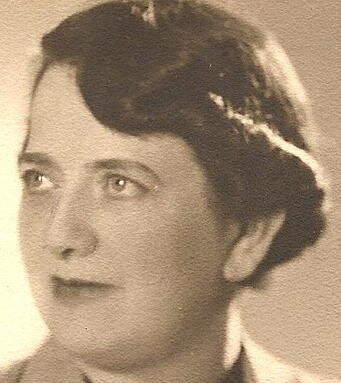
A sun-dappled meadow slopes gently down from the hilltop towards the city of Kaunas. The grass is freckled with yellow and purple wild flowers, a peaceful summer scene that belies an unimaginably brutal past.
On 29 November, 1941, my grandmother, Ilse Cohn, was shot here, in this field, by members of the Nazi death squad Einsatzkommando 3, under the command of a Swiss-born SS colonel called Karl Jäger. On that one day alone, they murdered 2,000 Jews who had been deported by train from Vienna and from my grandmother's hometown of Breslau.
So I have come to honour my grandmother's memory. My mother was her only child and although Ilse had three brothers, she had no nephews or nieces. My brother and I, and my two children, are her only living relatives.
Kaunas is the second largest city in Lithuania, with a population of more than 300,000. Before the war, its Jewish population numbered around 32,000. Today, there are barely 300 left. In October 1941, the Nazis, who had invaded Lithuania four months earlier, murdered 2,007 Jewish men, 2,920 Jewish women, and 4,273 children from the Kaunas ghetto. By 1944, the rest of the city's Jews had either been deported to concentration camps or died when the Nazis burnt the ghetto to the ground.
One ghetto street remains, the street that leads from the railway station to the killing fields of the Ninth Fort. This is the street the deportees walked along, on their way to their deaths. An eye-witness at the time recorded: "Two hours ago, there passed in front of our eyes, before the windows of our houses, many thousand Jews from southern Germany and Vienna who were taken with their luggage to Fort IX ... There they were killed with extreme cruelty."
I couldn't have embarked on this project while my mother was still alive. She didn't believe in looking back, especially if the past was full of bad memories, and discovered only 15 years ago exactly how her mother had died. She remembered that as a child, she used to love singing with her mother, and going to concerts together. Her mother loved clothes, and loved going out, always in high heels.
In one of her last letters, written in August 1941, Ilse wrote: "One has to take care of oneself for as long as possible... In my view, my courage to face life will disappear as soon as I no longer look smart and well-groomed."
I have brought her letters with me. They are carefully written, probably because Ilse feared they would be read by Nazi censors, but also because she may well have wanted to put on as brave a face as she could when writing to her only child.
Even so, the growing sense of desperation is impossible to miss. March 1941: "Unfortunately things are not going the way I had hoped. I have to be extremely patient, but I am not losing courage. I am still hoping that one fine day, we shall all meet again."
June 1941: "My journey to Uncle Ulle [her brother living in Chicago] seems to be impossible. Everything is upside down at the moment - all the work and all the money that has been spent seems to have been in vain."
And in September 1941, shortly after her 44th birthday: "My mood was below zero. I hope next year I will feel happier."
My birthday is the same day as my grandmother's; perhaps that's why I feel such a strong sense of connection when I see her name and date of birth on the list of the 1,005 Jews from Breslau who were shot at Kaunas.
There is a photograph in the Ninth Fort museum showing Jews from Munich before their deportation to Kaunas, just a few days before my grandmother was deported from Breslau. Many of the women are elegantly dressed, some in fur coats. That's how I imagine Ilse Cohn, on her way to her death.
Three days after she was shot, SS Colonel Karl Jäger submitted a report to his superiors, listing in meticulous detail the number of Jews he had ordered to be killed each day over the previous six months. That's how I know so exactly my grandmother's fate: it's there, in black and white.
"29.11.41 693 Jewish men, 1,155 Jewish women, 152 Jewish children (evacuated from Vienna and Breslau)." The original document in German can be read here. Karl Jäger managed to escape being captured at the end of the war, but was eventually arrested in 1959. He hanged himself while awaiting trial.
Journalists get used to reporting atrocities dispassionately, and on my visit to the Ninth Fort, I slip into my journalist's coat of armour all too easily. I compose images in the viewfinder of my camera, I record interviews and make notes. But then I stop and force myself to take off the armour. "Ilse," I say, as I stand at the edge of the killing field, "I was here today. You are not forgotten."
And on the way back to the car, past the giant Soviet-era memorial to the 30,000 dead, we walk past a small lake with girls swimming and laughing. I am not offended. Life goes on.
(You can read more about my project In the Footsteps of Our Families by clicking here.)
